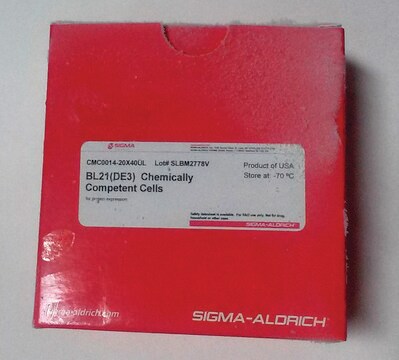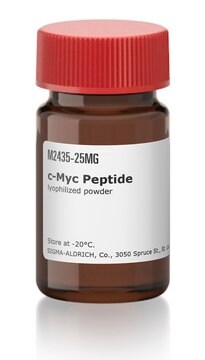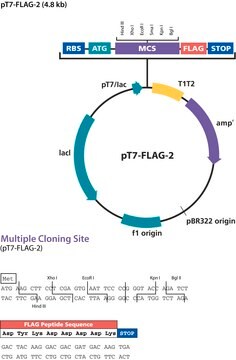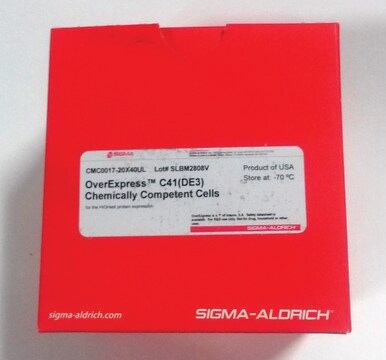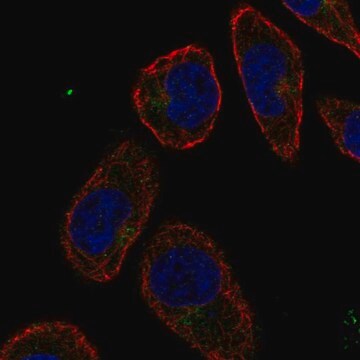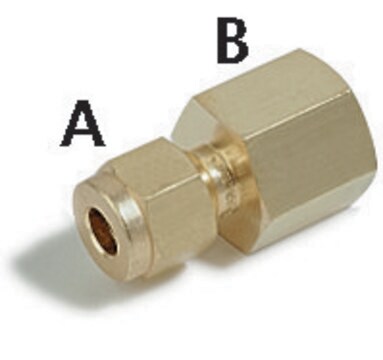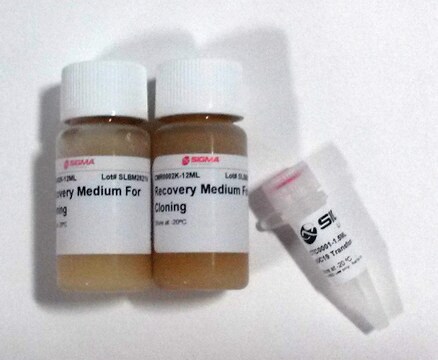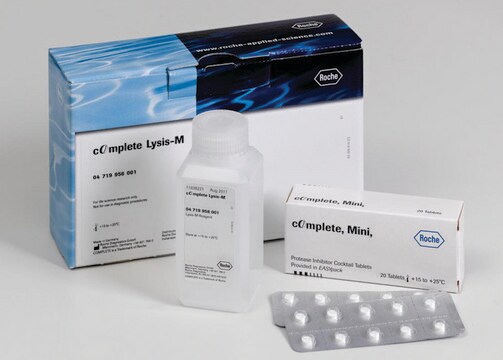おすすめの製品
product name
OverExpress™ C41(DE3) Electrocompetent Cells, for the highest protein expression
由来生物
Escherichia coli
グレード
for molecular biology
成長モード
adherent or suspension
形態
rod shaped
テクニック
microbiological culture: suitable
細胞形質転換
competent cell type: electrocompetent
transformation efficiency: ≥1 x 109 cfu/μg
輸送温度
dry ice
保管温度
−70°C
詳細
Genotype
F – ompT hsdSB (rB- mB-) gal dcm (DE3)
特徴および利点
- Express genes cloned into any T7 vector with these BL21(DE3) derivatives
- Effective in expressing toxic & membrane proteins
- Cited in over 350 research articles
構成
- OverExpress C41(DE3) electrocompetent cells
- pUC 19 transformation control DNA
- recovery medium for expression
法的情報
関連製品
保管分類コード
10 - Combustible liquids
適用法令
試験研究用途を考慮した関連法令を主に挙げております。化学物質以外については、一部の情報のみ提供しています。 製品を安全かつ合法的に使用することは、使用者の義務です。最新情報により修正される場合があります。WEBの反映には時間を要することがあるため、適宜SDSをご参照ください。
毒物及び劇物取締法
キットコンポーネントの情報を参照してください
PRTR
キットコンポーネントの情報を参照してください
消防法
キットコンポーネントの情報を参照してください
労働安全衛生法名称等を表示すべき危険物及び有害物
キットコンポーネントの情報を参照してください
労働安全衛生法名称等を通知すべき危険物及び有害物
キットコンポーネントの情報を参照してください
カルタヘナ法
キットコンポーネントの情報を参照してください
Jan Code
キットコンポーネントの情報を参照してください
試験成績書(COA)
製品のロット番号・バッチ番号を入力して、試験成績書(COA) を検索できます。ロット番号・バッチ番号は、製品ラベルに「Lot」または「Batch」に続いて記載されています。
プロトコル
OverExpress™ Electrocompetent Cells are provided in 25 μL aliquots, sufficient for one transformation reaction.
ライフサイエンス、有機合成、材料科学、クロマトグラフィー、分析など、あらゆる分野の研究に経験のあるメンバーがおります。.
製品に関するお問い合わせはこちら(テクニカルサービス)
